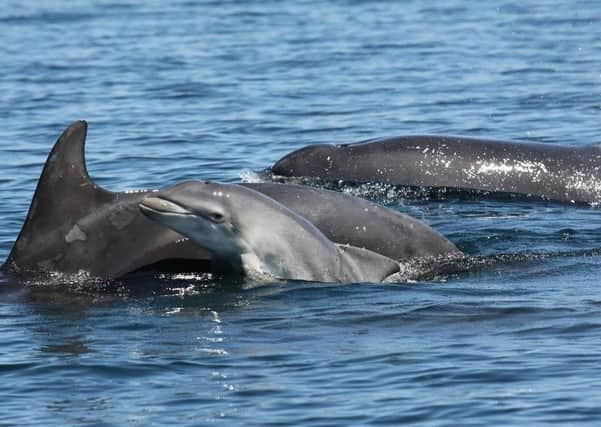Wanted: Dolphin pictures taken around our shores


Bottlenose dolphins on Scotland’s east coast are expanding their range and swimming further south, according to one of the longest-running studies of the species in the world.
Scientists at the University of St Andrews are now asking members of the public to submit their own photographs of the remarkable animals as part of a new project dubbed “Citizen Fins” to help identify where they are going.
Advertisement
Hide AdAdvertisement
Hide AdSurveys of Scotland’s east coast dolphins have been carried out by the Sea Mammal Research Unit (SMRU) between May and September each year since 1989.
The surveys have focused on two main areas: the Moray Firth and the Tay Estuary including the adjacent waters of Angus and Fife.
However, recent years have seen an increase in sightings of dolphins from this population in the Firth of Forth and as far south as the coast of northern England.
The researchers use photographs to identify individual dolphins based on the nicks, notches and other natural marks on their dorsal fins.
Advertisement
Hide AdAdvertisement
Hide AdKnowing when and where animals are allows the team to estimate how many dolphins there are in the population, their birth and natural mortality rates, and to learn about their movements up and down the coast.
Led by Dr Mònica Arso Civil and Professor Philip Hammond of the SMRU, the new “citizen science” project aims to help understand changes in the dolphins’ movements along the east coast of Scotland and even down to the north-east coast of England.
Dr Arso Civil said: “We have been monitoring this population of bottlenose dolphins for 30 years now, which has allowed us to follow individuals, sometimes from birth, as they have gone on to raise their own young.
“Some of these well-known individuals have been repeatedly seen in areas along the English coast over the last few years.”
Advertisement
Hide AdAdvertisement
Hide AdOne such dolphin, known as Guinness, is a female first photographed in 1989 with her then one-year old female calf, Muddy.
Regularly seen in the Moray Firth during the 1990s, Guinness was then seen more frequently around the Tay Estuary and St Andrews Bay, where she was last seen in 2015.
The Citizen Fins project – funded by NatureScot and by the Forth and Tay offshore wind developers, Seagreen, Inch Cape and Neart na Gaoithe – invites members of the public to submit photographs which show the dorsal fin so dolphins can be identified and matched to the population’s catalogue of individuals to monitor their movements and health.
Comment Guidelines
National World encourages reader discussion on our stories. User feedback, insights and back-and-forth exchanges add a rich layer of context to reporting. Please review our Community Guidelines before commenting.